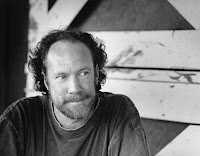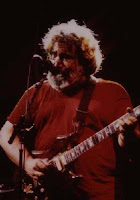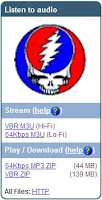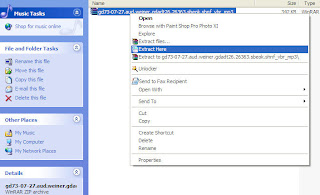Epic runs can be found in most every era of the Grateful Dead’s recording history, even as the years wore on toward the end. One latter day run that will forever live in the history books came in September 1990 at Madison Square Garden. If you find yourself to be one of those folks for whom late era Grateful Dead holds little to no interest (whether that be shows post 1985, post 1977, or maybe you just don’t touch the 90’s at all), this run will surprise you. It’s not that you should be listening to the entire catalog of music from years you typically don’t reach for, but rather, that there is occasional magic happening in these later shows that your early years loving ears would love to hear – music that will satisfy your soul in precisely the same way you have come to enjoy whatever your favorite year is all along.
With whatever credentials you might attribute to the volume of writing contained in these pages, I humbly offer to you my recommendation of 09/19/90. If you trust the Listening Guide when I feature a show from 1970, and immediately reach for the mouse to download something musically spectacular, I can honestly tell you this show from 1990 is equally deserving of your attention. Don’t pass it up on preconceived notions. You will not regret this. Please, enjoy with me...
Brent Mydland died on July 26, 1990, just five days after I had seen him play with the Dead at the World Music Theater in Tinley Park, IL . I was dumbstruck. We all were. The Dead were on such a high. The music was so good. It had been getting so much better over the last two years. We were basking in the beauty of our band almost assuredly delivering the goods any night we saw them (something that couldn’t be said of the handful of years prior to 1989). And then this.
 In retrospect, the fact that the band was able to continue this surge of creativity and growth so soon after Brent’s passing is a lovely testament to his memory. After replacing Brent with Vince Welnick, the Dead got right back on tour, and headed east. In New York, they were joined by Bruce Hornsby on piano, and a new line up of the band was born. Drawing energy from a number of inspirational points, the MSG run in 1990 was like a phoenix rising out of ashes. For me, the September 19th show is a glowing example of the tremendous power and energy that infused this stretch of shows.
In retrospect, the fact that the band was able to continue this surge of creativity and growth so soon after Brent’s passing is a lovely testament to his memory. After replacing Brent with Vince Welnick, the Dead got right back on tour, and headed east. In New York, they were joined by Bruce Hornsby on piano, and a new line up of the band was born. Drawing energy from a number of inspirational points, the MSG run in 1990 was like a phoenix rising out of ashes. For me, the September 19th show is a glowing example of the tremendous power and energy that infused this stretch of shows.This show also provides us the opportunity to listen to an audience recording of the absolute highest order imaginable. Tom Darian managed to capture the entire run from right around the 15th to 20th row center every night. The 19th, recorded from row 18, might be the crowning jewel of this MSG recording collection. The quality of the recording matches the music, and that is an incredible statement to be made, as the musical performance scores an 11 on a 0-10 scale.
Preferentially speaking, the set list on 09/19 is a clear winner in my book. Tending, as I do, to gravitate toward earlier year performances, 09/19 is an awesome snapshot of a set list that could almost be something pulled out of the intricately weaving sets of late 1976. For me, the stars align with this date – set list, show quality, sound quality; all in perfect form.
 With so much to comment on, I will attempt to focus on some highlights. Right out of the gate we get a blazing Jack Straw. Jerry just tears it up. His solo ignites the entire house, and it is clear that we are in for something special. The rest of the set is strong, solid first set material – Bertha, Big River, and It Must Have Been The Roses all delivering the goods. And then we reach the closer, Help>Slip>Frank. This version could have been grafted out of 1977 and inserted here thirteen years later. It just has that picture perfect feel to it. The Slipknot highlights Garcia working phenomenal magic with his leads as the song begins to expand out and awaken the phosphorescent hues of candy colors lying in wait in the expectant crowd. He swirls in snaking lines all around the music, riding his slightly buzzed guitar tone deliciously through the rhythms. He then gives way and Hornsby takes a piano solo. He’s been with the band for only a matter of days, but he instinctually knows exactly how to work things. He pushes the music into luscious field of dissonance and tension, which Jerry immediately latches onto, and rides into the air. The music pushes out of bounds beautifully here, with worming knots of energy sliding everywhere. And then comes Franklin’s Tower.
With so much to comment on, I will attempt to focus on some highlights. Right out of the gate we get a blazing Jack Straw. Jerry just tears it up. His solo ignites the entire house, and it is clear that we are in for something special. The rest of the set is strong, solid first set material – Bertha, Big River, and It Must Have Been The Roses all delivering the goods. And then we reach the closer, Help>Slip>Frank. This version could have been grafted out of 1977 and inserted here thirteen years later. It just has that picture perfect feel to it. The Slipknot highlights Garcia working phenomenal magic with his leads as the song begins to expand out and awaken the phosphorescent hues of candy colors lying in wait in the expectant crowd. He swirls in snaking lines all around the music, riding his slightly buzzed guitar tone deliciously through the rhythms. He then gives way and Hornsby takes a piano solo. He’s been with the band for only a matter of days, but he instinctually knows exactly how to work things. He pushes the music into luscious field of dissonance and tension, which Jerry immediately latches onto, and rides into the air. The music pushes out of bounds beautifully here, with worming knots of energy sliding everywhere. And then comes Franklin’s Tower.Really, if you didn’t know any better, you could think this performance was happening in 1976 or 77. They nail the energy and tempo of this song so perfectly, that I can’t call to mind many a Franklin from back in its heyday (1976-79) which exemplify the song’s own ideal any better. And, my God, Garcia’s leads throughout are so jubilant. The entire band is riding a joyous wave, and the crowd is right there with them. This Frankin’s Tower is an endorphin rush end to end. We couldn’t be in any more perfect a spot to wrap up a Grateful Dead first set. Matching Jerry toe to toe, Hornsby again lifts the entire proceedings with an outpouring of perfectly suited energy. This is just plain wonderful music all the way through. As the lead sections return to verse, you can’t help but find extreme joy in that you are nestled in the middle of a wondrous ride – deep within, and nowhere near the end. When the set does end, it’s all smiles.
Set two wastes no time opening with Playin’ In The Band. The jam blossoms with Phil hopping and bopping, and Vince swirling wet B3 organ chords. It’s a smooth ride as the music billows out in long extended waves, cresting and falling in slow random intervals. The band is fused together, and you can hear it in the way phrases dance from instrument to instrument. Everything follows long rolling tunnels and turns, and you can easily lose the definition between yourself and the music as it casts a deeply hypnotic spell. Edges start to fray beautifully, bringing us to a wonderful open and quiet vista where Ship Of Fools emerges, manifested directly out of the slow turning colors in our eyes.
 It’s a wonderful version, full of gospel undertones. And on its final notes the band effortlessly slips back onto the vista out of which Ship Of Fools emerged, and the Playin’ jam is back filling our vision with the slow turn of multi-hued sunsets. Here we are treated to a wonderful segue jam on the way to Uncle John’s Band. It appears, and the crowd welcomes it with open arms. The entire Garden sings along with the band, and it’s another of those most precious intimate moments between band and fans, unmistakably vibrating off of the tape. Before the final a capella section, Phil drops a huge low note that comes though nicely on this perfectly recorded tape. In the exit jam, Jerry transitions into his synth sound which adds great effect, not overstated in any way. And this rolls effortlessly into Let It Grow (making its first set two appearance since 1986!). The transition is wonderful. The entire song sparkles.
It’s a wonderful version, full of gospel undertones. And on its final notes the band effortlessly slips back onto the vista out of which Ship Of Fools emerged, and the Playin’ jam is back filling our vision with the slow turn of multi-hued sunsets. Here we are treated to a wonderful segue jam on the way to Uncle John’s Band. It appears, and the crowd welcomes it with open arms. The entire Garden sings along with the band, and it’s another of those most precious intimate moments between band and fans, unmistakably vibrating off of the tape. Before the final a capella section, Phil drops a huge low note that comes though nicely on this perfectly recorded tape. In the exit jam, Jerry transitions into his synth sound which adds great effect, not overstated in any way. And this rolls effortlessly into Let It Grow (making its first set two appearance since 1986!). The transition is wonderful. The entire song sparkles.Let It Grow dissolves like a tree losing its leaves, and then its branches, in sunlit breezes. A gentle world of interplay featuring Jerry, Bobby, Vince, and Bruce takes place, all tinged with the memory of Let It Grow themes. Eventually Jerry ushers in a more intense jam wherein he can even be heard to toss in a few riffs from Loose Lucy. It’s a free cascading jam that plays itself out nicely, eventually finding the drummers returning as all musical form drops away, and Space infuses everything. A seriously mind twisting passage leads the way into Drums proper.
Space gives way to Goin’ Down The Road Feelin’ Bad which lifts the house to its feet. By no means a throw away version, everyone is doling out and feeding off of energy at every turn. And then there’s the majestic Stella Blue. This song had the ability to reach all the way down to the center of your heart, and with Jerry’s singing and solo on this one, you just couldn’t ask for anything more. Perched as we are on the shoulders of the taper sitting in the perfect spot, it’s one of those “Jerry was playing right to me” moments. As the song plays out to its end, the pure bliss factor of the Dead rolls out over you.
This recording is just plain wonderful. Enjoy!
09/19/90 AUD etree source info









 Undoubtedly feeling no regret over possibly eating them a little bit earlier than might have been prudent for the task at hand, it is this that left him unable to navigate the complex diodes, plastic coatings, and vibratory electrical fields of his recording gear, each of these competing for attention as the 07/31/74 Dillon Stadium show began. That and the full-on pleasure of a Grateful Dead show getting underway while he sat in a very sweet spot indeed. While he made attempts to get the tape going and recording correctly, it wasn’t until he eventually found an opening where the slowly shifting panes of his mental kaleidoscope glass came into something of a focus, that Bill was able to pull all the elements together and get the tape going in time for Mississippi Half Step.
Undoubtedly feeling no regret over possibly eating them a little bit earlier than might have been prudent for the task at hand, it is this that left him unable to navigate the complex diodes, plastic coatings, and vibratory electrical fields of his recording gear, each of these competing for attention as the 07/31/74 Dillon Stadium show began. That and the full-on pleasure of a Grateful Dead show getting underway while he sat in a very sweet spot indeed. While he made attempts to get the tape going and recording correctly, it wasn’t until he eventually found an opening where the slowly shifting panes of his mental kaleidoscope glass came into something of a focus, that Bill was able to pull all the elements together and get the tape going in time for Mississippi Half Step.









-edit.jpg)




